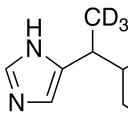[Study on correlation between TCM syndrome and urinary protein in patients with early chronic kidney diseases].
Ключавыя словы
Рэферат
OBJECTIVE
To analyze the characteristics of TCM syndrome distribution and its correlation with urinary protein in patients with early chronic kidney diseases (CKD), for the sake of providing a basis for clarifying the rules of TCM syndrome differentiation in CKD.
METHODS
Adopting traditional epidemiological retrospective method, the TCM syndrome and urinary protein related indexes, including 24 h urinary protein (Upro), urinary albumin (UAlb), urinary beta2-microglobulin (Ubeta2-MG), urinary N-acetyl-beta-D-glucosaminidase (UNAG), urinary beta-galactosidase (UGAL), etc, were collected from 199 patients with early CKD, and a multiple factor regression analysis between them was conducted.
RESULTS
In patients with early stage CKD, the TCM symptoms, as independent factors closely related to urinary protein, were aching loins, poor appetite and indigestion, yellow and brownish urine, regurgitation acid, profuse nocturnal urine, edema, foamy urine, cough, aversion to cold and cold limbs, etc; the elevation of UAlb with the factors of Pi-Shen qi-deficiency as aching loins, poor appetite and indigestion was correlated; elevation of UNAG with edema, foamy urine, profuse nocturnal urine, cough; UGAL with Pi-Shen yang-deficiency factors as aching loins, aversion to cold and cold limbs; and elevation of Ubeta2-MG with edema were correlated respectively as well. Levels of UAlb and UNAG in patients of Pi-Shen qi-deficiency type were significantly higher than those in patients of Gan-Shen yin-deficiency type, Fei-Shen qi-deficiency type, and Pi-Shen yang-deficiency type, respectively (all P < 0.05).
CONCLUSIONS
For early stage CKD patients, Shen and Pi are the major organs related to the appearance of urinary protein; Pi-Shen deficiency is the basic pathogenesis. Level of UAlb, which is associated with Pi-Shen qi-deficiency type, could be taken as one of microcosmic syndrome factors for the syndrome type; UNAG also be related with that syndrome to certain extent; and heat-damp syndrome might be an independent type.




